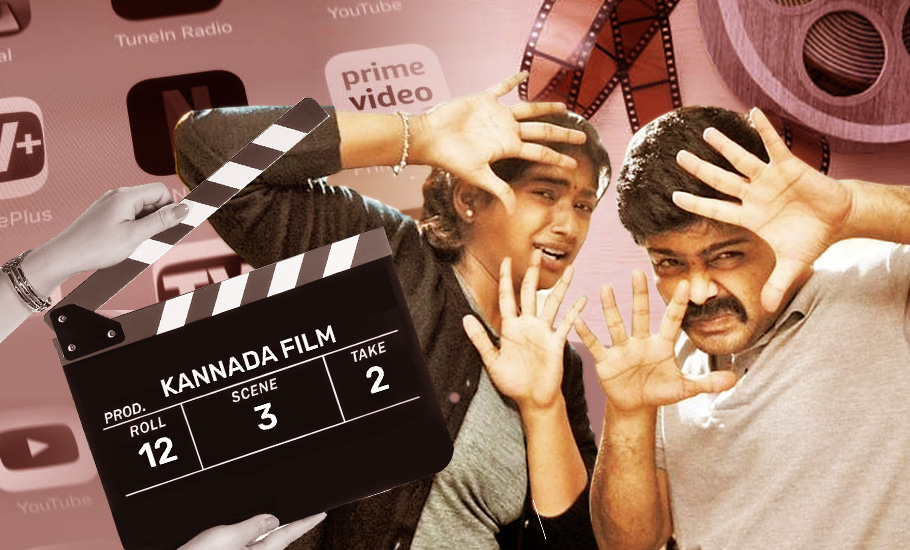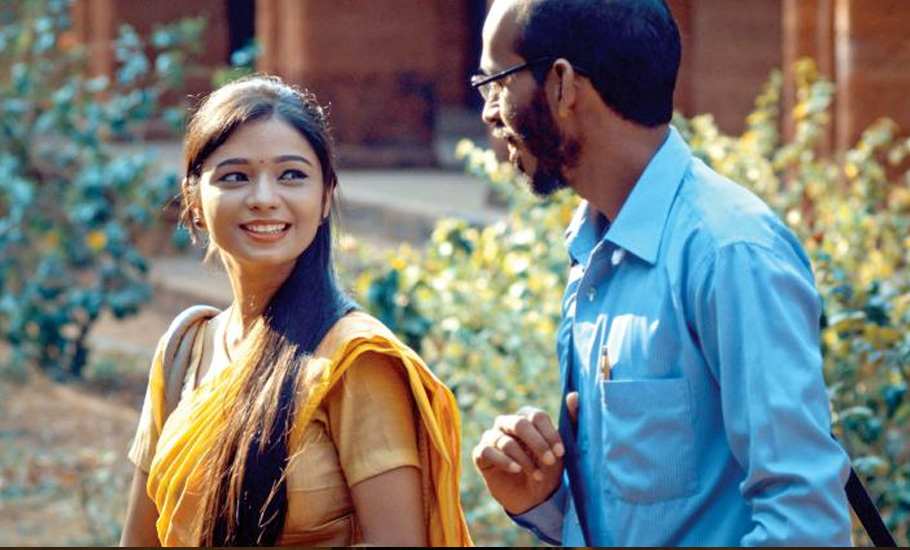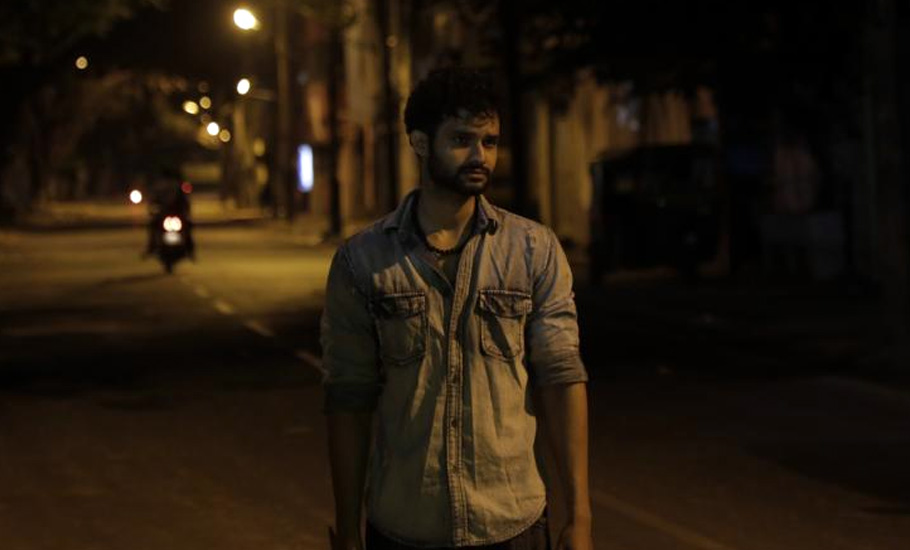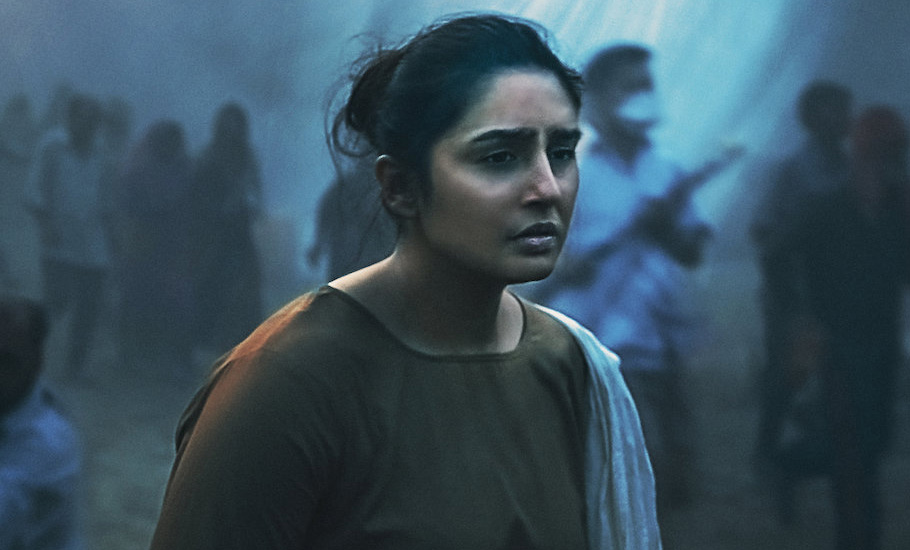
- Home
- News
- Analysis
- States
- Perspective
- Videos
- Education
- Entertainment
- Elections
- World Cup 2023
- Features
- Health
- Budget 2024-25
- Business
- Series
- NEET TANGLE
- Economy Series
- Earth Day
- Kashmir’s Frozen Turbulence
- India@75
- The legend of Ramjanmabhoomi
- Liberalisation@30
- How to tame a dragon
- Celebrating biodiversity
- Farm Matters
- 50 days of solitude
- Bringing Migrants Home
- Budget 2020
- Jharkhand Votes
- The Federal Investigates
- The Federal Impact
- Vanishing Sand
- Gandhi @ 150
- Andhra Today
- Field report
- Operation Gulmarg
- Pandemic @1 Mn in India
- The Federal Year-End
- The Zero Year
- Premium
- Science
- Brand studio
- Home
- NewsNews
- Analysis
- StatesStates
- PerspectivePerspective
- VideosVideos
- Entertainment
- ElectionsElections
- Sports
- Loading...
Sports - Features
- Budget 2024-25
- BusinessBusiness
- Premium
- Loading...
Premium

Why Kannada cinema failed to ride the OTT bandwagon

Ikkat (Dilemma), the Kannada language film set in the backdrop of the first wave of the coronavirus and the subsequent lockdown, makes the audience laugh amid the gloom that surrounds all of us. The movie, with a fictionalised plot, takes a lighter approach to the lockdown that forced many of us to stay indoors and made things go awry. The main characters–Vasu (played by Nagabhushana...
Ikkat (Dilemma), the Kannada language film set in the backdrop of the first wave of the coronavirus and the subsequent lockdown, makes the audience laugh amid the gloom that surrounds all of us. The movie, with a fictionalised plot, takes a lighter approach to the lockdown that forced many of us to stay indoors and made things go awry.
The main characters–Vasu (played by Nagabhushana NS)and Jhanvi (Bhoomi Shetty)–the husband and wife duo who are poles apart, try to tolerate each other during the 21-day lockdown. And a ‘superimposed’ irritable character called Dude Maga, a tik-tok star played by Rj Vikki, becomes part of the narrative till the end and weaves the story together.
Ikkat, which was released directly on OTT platform Amazon Prime in mid-July, stands out among the usual fare rolled out by the Kannada film industry. Shot inside a house with limited characters, including a spider and a cockroach, the independent movie (with all newcomers) does justice to the subject with its humour and a brilliant background score.
From Prime Minister Narendra Modi announcing the first nationwide lockdown to the paranoia created by news channels over the spread of COVID-19 and the banging of plates to shoo away the virus, the movie beautifully captures the nuances of the lockdown.
Ikkat, a second presentation by PK Studios owned by director Pawan Kumar of U-Turn fame, premiered along with Fahadh Faasil-starrer Malayalam flick, Malik, which revolves around a hard-hitting topic on police firing incident in Kerala, and Farhan Akhtar-starrer Hindi sports drama, Toofan. Ikkat, by all means, stood out in the comedy genre.
Over the last couple of years, regional language filmmakers — in Malayalam, Tamil and even Telugu to an extent — explored different formats and genres. They also picked up bold topics based on socio-political issues. Lead actors from the industry took up roles moving beyond their comfort zone. But somehow the starstruck Kannada film industry missed the bus and struggles to find space on OTT platforms.
Why so shy
Often, with Kannada movies showcasing big stars and storylines that are soaked in gender stereotypes and family sentiments, Sandalwood failed to appeal to the sensibilities of a generation of audience. As a result, many moved away from Kannada movies and lost faith that a well-crafted film would be made in the language. Even some actors prefer to work outside the Kannada industry mainly because of the opportunities presented to them.
It’s not a secret anymore. Even staunch Kannada movie lovers have lost all arguments to back the industry. Filmmakers themselves are drawing inspiration from other regional cinema because of the lack of good original movies in Kannada.
From availability of resources to talent pool and hesitancy from big actors and producers, the industry faces a plethora of problems. The marriage between big brands, leading actors and established producers that you see in Malayalam or Tamil industry, hasn’t happened in Kannada yet.
Films like Lucia, Nathicharami, Godhi Banna Sadharana Maikattu, U-Turn, Idolle Ramayana, Sakari Hiriya Prathamika Shaale, Thithi, Bhinna, Kahi, and Ondu Motteya Kathe, which are all out-of-the-box ideas, have certainly changed the way viewers look at Kannada films. But it comes only from a handful of filmmakers like Pawan Kumar, Rakshit Shetty, Arvind Sastry and Adarsh Eshwarappa who are making a mark in the industry of late.
And there’s still a long way to go.

They are hopeful that the Covid crisis would change the way producers, actors and directors look at filmmaking and adapt to the situation.
Writer and director Adarsh Eshwarappa whose film Bhinna, touted as the first Kannada film to be premiered on OTT, admits that when it comes to scripts and the quality of films, Kannada films certainly lag behind. “It pains to say this but even I am not very keen to see a lot of films that are made here. Quality is a big issue,” he says.
With digital technology and ease of access, he says people who haven’t really learnt or understood the craft of filmmaking are putting money into the ‘business’ which is kind of affecting the ecosystem.
“Many aspiring filmmakers don’t even spend time watching films, or working under established directors to learn the craft,” he says. “These two things are very important to become a good filmmaker.”
Eshwarappa, who also occasionally teaches at film schools, says many do not have the exposure to world cinema and they are either stuck with just Kannada films or the so-called blockbusters and draw inspirations from those.
“I wasn’t into foreign cinema before. But once I became a filmmaker, I decided to spend years watching only Hollywood cinema,” he says.
With OTT platforms removing the language barrier — subtitles making any content universally understandable — the accessibility has improved, unlike before. It’s just that people will have to get used to it. Online streaming services, which are growing at a rapid pace in India, are in a race to produce content in regional languages to attract new audiences. Even though not ready to roll out yet, OTT platforms such as Katte and Nammaflix are all set to enter the market with Kannada-only content.
According to an EY-FICCI report The share of regional content will increase to 60% of television consumption in 2025 from around 55%1 in 2020, and will increase to around 50% of OTT consumption from 30% in 2019.
“The Malayalam movie, The Great Indian Kitchen, which initially streamed on a lesser-known platform and was later picked up by Amazon, is a great example for how good content doesn’t go unnoticed,” he says.
What the Kannada industry needs is not just one or two films that are good in quality, but there has to be more quality content delivered regularly. And for that, trade experts say, the industry has to come together.
Since there existed an unofficial ban on dubbing of films to promote the local content, it also had its pros and cons. For the Kannada industry to remake a film, unless it’s a box office success in another industry and has made money elsewhere, they don’t prefer to pick it up. Content plays a lesser role in that.
Screenwriter and director Arvind Sastry, whose films Kahi and Alidu Ulidavaru were premiered on Netflix and Amazon Prime respectively, agrees that the industry is falling behind its peers.
“Kannada industry as a whole has lagged behind. There are hardly any film schools here. LV Prasad Academy has a branch here but people of this region barely know about it,” he says.
Besides, he adds, there seems to be a system in place, where big stars are committed to certain investors, who have opinions of their own and want stories to be told in a certain way.
“Kahi was an independent project. But when I worked with a producer after that, I had to mould myself to suit his sensibilities. It goes against the very reason why I was approached in the first place,” Sastry says.
Artistic freedom and sustainability is what more and more young directors, writers and actors are looking for. While the industry is transforming slowly, the audience choice is also changing with OTT platforms giving people a chance to watch varied content.

Actor Sruthi Hariharan, whose movies Nila (Tamil) and Nathicharami (Kannada) stand out for strong female leads, says there’s no dearth of talent in the industry, just that their potential is yet to be exploited.
Hariharan has mostly worked in offbeat movies with well-written, engaging scripts. And that’s because while signing a movie, her main consideration is the storyline. She has won the Special Jury Award at the 66th National Awards for her performance in Nathicharami (available on Netflix).
Even though she has acted in Tamil and Malayalam films as well, Hariharan says it’s less about the language and more about the kind of cinema that matters to her. “I never once thought I was moving away from my [Kannada] audience and cheating them,” she says.
One thing that makes her happy is that actors and filmmakers like her don’t have to cater to a starstruck audience who look for movies that prizes machismo and reinforces patriarchy. She says some of her films broke-even purely because they premiered on OTT platforms.
It is no longer about the mass audience. “Nathicharami taught us that we have enough viewership. There’s an audience which is looking forward to the kind of content we make.”
A ray of hope
Like Hariharan, Pawan Kumar is another among the new crop of filmmakers trying to break the mould. Ondu Motteya Kathe, which revolves around the struggles and insecurities of a young man experiencing premature balding, that Kumar produced in 2017, has been remade into seven different languages. It bagged three awards–best Kannada film, best director and best supporting actress–at the 65th Filmfare Awards.
He also has to his credit Leila, a dystopian drama series that premiered on Netflix, which he co-directed. Based on Prayaag Akbar’s 2017 novel, it’s both chilling and eerily emblematic of our times.

He also recently directed Telugu web series, Kudi Yedamaithe, a sci-fi thriller for Aha, a Telugu web content platform.
Kumar says his own study found that dubbed content did well as people got to watch movies in the language they know. This also helped directors coming from even smaller towns to remain updated with the knowledge of storytelling. And by banning dubbing for a long time in Kannada industry, he feels, it has acted against the industry interest.
“Audiences who were sensitive to artistic content, literally got away from watching Kannada movies in the last two decades. And the rest turned to be star-worshippers,” Kumar adds.
So producers, he says, were more interested in popular genres since that made more commercial sense.
Kumar has roped in leading star Puneet Rajkumar for his next film, Dvitva, a psychological thriller. It would be a first for a young filmmaker in the Kannada industry to work with an established actor.
When asked if he’s trying hard to be different from the mainstream Kannada filmmakers, he says, “This is my voice. This is how I know to tell a story. I am not consciously trying to be away from anybody. I am just telling the story the way I want to tell it.”
While some complain that the OTT platforms are not open to Kannada movies as it has limited viewers, Kumar thinks otherwise. He feels if a film can get the OTT platform enough subscribers, they would put money in it. “They have nothing against Kannada. It’s a business decision for these platforms.”
Kumar understands the market and the audience well. With his movies U-turn and Lucia, he tried to bring back the lost audience of the Kannada industry, with more relevant content at play. And he feels happy that a few others are following suit and there is a slow transition towards making good films.
But unlike Kumar, Sastry disagrees with the fact a generation of audience have drifted away from watching Kananda content. He, however, says they will not tolerate poor quality content anymore. “They [audience] are less afraid of speaking up against stars who are dishing out poor content. They no longer hesitate to call them out,” he says.
As Pawan says, the Kannada movie industry is seeing a slow change. And the good news is, it certainly seems to be heading in the right direction.

